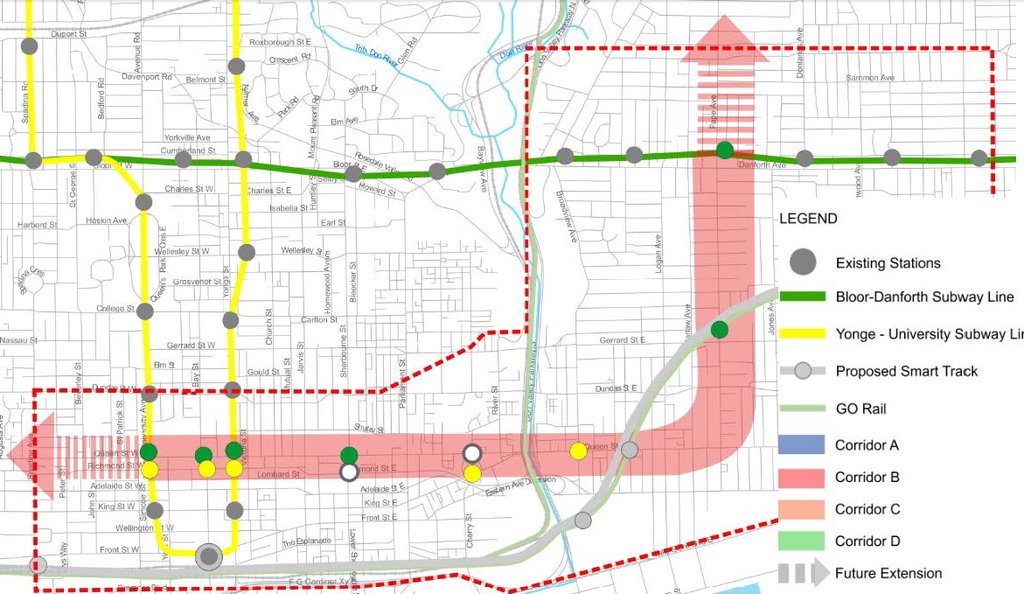TORONTO — Recommendations by experts presented to Toronto’s Executive Committee on Wednesday put the breaks on mayor John Tory’s ambitious vision of a 22-stop transit network, SmartTrack, from Unionville to Mississauga. The plan is still going ahead but in a scaled-down version.

The Transit Network Plan: Phase 1 study recommended against a heavy rail option for the three western-most stops on the SmartTrack line.
“Costs are significant for heavy rail options, ranging from $3.6 to $7.7 billion,” read the report. The option would also involve “significant community impact.”
Some councillors argued the centerpiece for John Tory’s election campaign remains SmartTrack in name only.
“None of what was originally proposed about SmartTrack is before us anymore. It was originally going to be its own train on its own tracks,” said councillor Gord Perks.
“Twenty-two stations, subway frequency, subway prices – all of that is gone.”
The recommended options still involve between four and eight new stations, and supporters of the plan and the mayor say his willingness to re-align his vision is proof that he’s amendable to new facts and reason.
“I think the mayor’s position is very responsible, very mature, very good for Toronto taxpayers,” said councillor Glenn De Baeremaeker.
Instead, the analysis by engineering consultants HRD recommends an existing LRT expansion west from the Mt. Dennis station to bring people to the Toronto Airport Corporate Centre, which was the original western terminus of SmartTrack.
A preferred route for the Scarborough subway extension also came closer to reality. The report recommended examining two northern corridors: one along McCowen Road, the other along Midland Avenue.
The line would be a one-stop extension from Kennedy Station to Scarborough Town Centre. The Executive Committee also adopted a recommendation to look at integrating the line with the Eglinton East LRT into the University of Toronto’s Scarborough campus.
“At the end of the day that is what people want. They don’t want us to talk about the theoretical and draw maps on napkins,” said TTC Chair Josh Colle. “They want real transit to be built.”
A preferred route for the downtown relief line was also presented to city councillors. The line cuts east – west underneath the city along Queen and Richmond streets then up to Pape Station.
The line has the potential of capturing between 90,400 to 189,600 daily boardings in 2031. Much of this volume would be offloaded from a now-cramped Yonge-University-Spadina subway line.
The report and its recommendations received unanimous support from councillors.
- Iran fires air defences at military base after suspected Israeli drone attack
- U.S. aid to Ukraine, Israel set to pass. But bills differ in one key area
- Carbon rebate labelling in bank deposits fuelling confusion, minister says
- Conservatives ask interference inquiry judge to rule elections were flawed






Comments